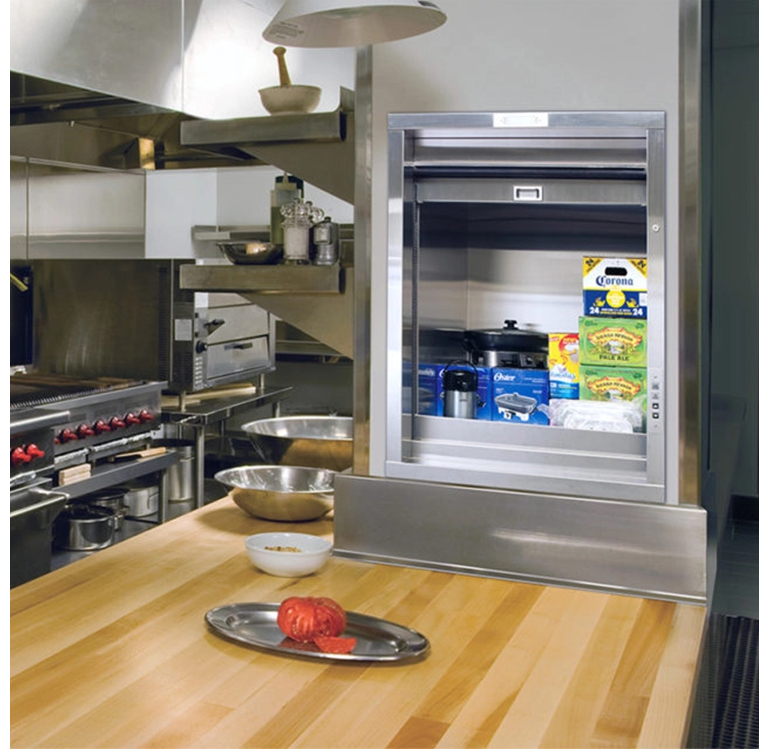What are the three types of dumb waiters?
The three main types of dumbwaiters elevators are:
Electric Dumbwaiters: These are the most common type and are powered by an electric motor. They are suitable for both residential and commercial use and can be customized to fit specific space and load requirements.
Hydraulic Dumbwaiters: These dumbwaiters use hydraulic power to move between floors. They are often chosen for their smooth and quiet operation, making them suitable for environments where noise is a concern.
Manual Dumbwaiters: These are operated by hand and are typically used in smaller residential settings. They are more basic in design and are often more affordable than electric or hydraulic options.

Why do they call it a dumb waiter?
The term "dumb waiter" actually has nothing to do with intelligence or lack thereof. The term originated in the 18th century and referred to a small serving table on wheels that could be wheeled from room to room to serve food and drinks. The word "dumb" in this context meant silent or mute, as the serving table didn't speak or make noise. Over time, the term "dumb waiter" came to be associated with the mechanical devices used to transport food and dishes between floors in a building, and the name stuck even though the devices have nothing to do with waiting or intelligence.
Why are dumbwaiters so expensive?
Dumbwaiters can be expensive for several reasons. Firstly, the materials and construction of a dumbwaiter need to meet safety and durability standards, especially if it's being installed in a commercial or public building. Additionally, the installation process can be complex, requiring professional expertise and potentially structural modifications to the building. The cost also includes the electrical components, motors, and control systems that enable the dumbwaiter to operate smoothly and safely. Finally, the price may also reflect the level of customization and features, such as weight capacity, size, and design options. Overall, the cost of a dumbwaiter reflects the quality, safety, and convenience it provides.
Can a person fit in a dumbwaiter lift?
It's not safe for a person to ride in a dumbwaiter. Dumbwaiters are designed to transport objects, not people, and they have weight limits that are typically much lower than what would be safe for a person. Attempting to ride in a dumbwaiter can be extremely dangerous and can lead to serious injury or even death. It's important to use dumbwaiters only for their intended purpose, which is to transport items between floors.
Can you put a dumbwaiter in your house?
Yes, it is possible to install a dumbwaiter in a house. Dumbwaiters can be a convenient way to transport items such as groceries, laundry, or dishes between different floors of a home. However, it's important to consider the space available, the structural requirements, and the cost of installation. Additionally, it's advisable to consult with a professional to ensure that the installation is done safely and in compliance with building codes and regulations.
What is the standard size of a dumbwaiter lift?
The standard size of a dumbwaiter lift can vary depending on the manufacturer and the specific model. However, typical dumbwaiter lifts for residential use often have interior dimensions ranging from around 20 inches wide by 20 inches deep to 30 inches wide by 30 inches deep. Commercial dumbwaiters may have larger dimensions to accommodate heavier loads and larger items. It's important to consult with a professional or the manufacturer to determine the appropriate size for your specific needs.
Post time: Aug-19-2024
